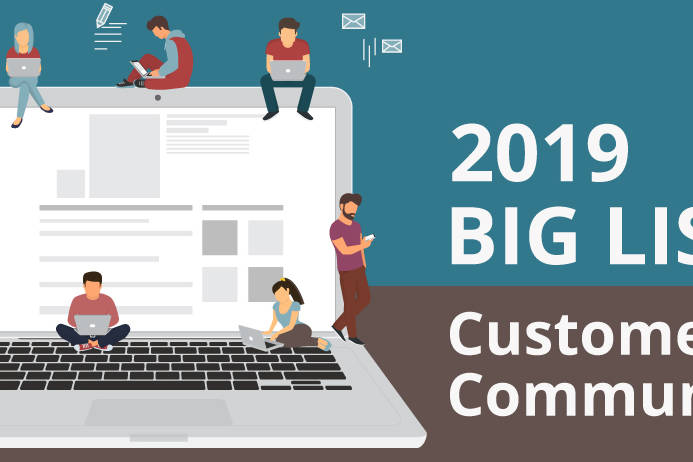Social customer service has received mixed reviews – there are many active and thriving online channels offering to support customers, answer questions, resolve problems and gather new product and service ideas, but their benefits and ROI are not often documented in ways that go beyond success anecdotes. We all know those stories and the positive outcomes, but where are the data demonstrating the real impact on business? What’s the current state of these initiatives and where are the growth opportunities? At last, some answers!
Here are some of the findings that caught my attention:
- 71.2% of companies surveyed use social media as a channel to address customer service issues or questions.
- Despite this proliferation, only 7% said they were very satisfied with their company’s effort to use social in customer service and also saw very positive impact from its use.
- The most common channels currently used were Facebook (86.2%), Twitter (78.8%), Other (28.3%), and branded online communities (24.9%).
- 54.8% report that their outreach through social media and online networks is fully integrated into their traditional customer service problem resolution processes. Clearly there is still a ways to go before social customer care has a distinct impact on core operations.
A specific area that caught my attention is the efficacy of branded communities for social customer care is on the rise!
- Almost 25% of the general survey population cited using branded communities as a channel for customer engagement. Additionally, 46% of respondents from companies using branded communities have 2+ years of experience with social service—compared to 34% overall.
- Online branded community is considered most effective (12.6%) by companies at the 6–12 month mark (when online communities start to show returns after gaining critical mass) and again after the 2 year mark (10.5%) when communities have matured and are steadily contributing to customer service answers.
The authors elaborate on this remarkable finding: “Facebook and Twitter are still very important channels for those also using branded communities, as they are to the general population. But their branded communities are used by them more than they use Twitter or Facebook to engage with customers. And these branded communities are their most effective social channel—more so than either of the two social giants.”
A final data point to linger on: Services industry respondents engagement with branded online communities trails that of the overall survey population (3.3% vs. 9% overall). Contrast this with communications and retail industry respondents’ heavy involvement with branded online communities (14.3% and 14.5%, respectively). This comes as a bit of a surprise as the service industry, by definition, is likely to see the greatest returns from customer engagement and, well, service, online.
So … what makes online community such a powerful channel for customer service? Is it the greater customer intimacy possible within an online community that fuels their success compared to public social networks? One reason might be that a customer in a community is more than an online handle, and has the potential to establish an ongoing relationship with the community, company and other customers. Another might be the ability to connect a single customer need to a more contextual understanding of who that customer is? Especially with private online communities, data on past needs plus product and service purchases are more accessible and give a good indication of the customer’s overall footprint with the firm. This makes it easier for the company to address the specific needs of that customer driven by history and context.
Of course, I suspect it’s “all of the above,” plus an often overlooked factor which drives returns – namely, that branded online communities provide the means for an organization to affect their core operations directly through responsive service to their customer’s needs. It’s more than reducing call center volume. Instead, the emphasis is on serving and engaging the customer, thus enabling customer-driven innovation. We all know the adage that an organization can only cut costs so far before reaching the end of the efficiency improvement trend. However, the ability to innovate through new products and services is infinite.
When an organization uses online community for social customer care, they are, in effect, placing their customers at the center of their operations. Through the data gathered via online community-driven customer service, product innovation and greater speed to market based on customer wants and needs can unlock tremendous new value and opportunity. This is the power and differentiation a branded online community can provide. It trumps a Twitter feed any day.
For all you social customer and online community practitioners and strategists out there, I encourage you download this powerful and in-depth (almost 100 page) report filled with survey data and excellent case studies social customer case studies from companies such as Dell, Best Buy and JetBlue. Let the business case building begin!
Warning: Attempt to read property "base" on array in /home3/trusten9/public_html/leadernetworks/wp-content/plugins/wp-user-profile-avatar/shortcodes/wp-user-profile-avatar-shortcodes.php on line 665
Warning: Attempt to read property "base" on array in /home3/trusten9/public_html/leadernetworks/wp-content/plugins/wp-user-profile-avatar/shortcodes/wp-user-profile-avatar-shortcodes.php on line 665
Warning: Attempt to read property "base" on array in /home3/trusten9/public_html/leadernetworks/wp-content/plugins/wp-user-profile-avatar/shortcodes/wp-user-profile-avatar-shortcodes.php on line 665
Warning: Attempt to read property "base" on array in /home3/trusten9/public_html/leadernetworks/wp-content/plugins/wp-user-profile-avatar/shortcodes/wp-user-profile-avatar-shortcodes.php on line 665
Related Posts
1 Comment
Add comment Cancel reply
This site uses Akismet to reduce spam. Learn how your comment data is processed.



Agreed, open social media platforms are providing appropriate channels for social customer service for companies serving ‘the masses’ eg Australia Post, Queensland Rail, governments.
However, some real barriers to the utilisation of open social media channels as corporate tools and B2B communities exist – primarily the ‘open’ nature of the channels themselves. Sensitivity and privacy issues top the list. This can be highly relevant for services of an ‘advice’ nature – a gated community approach may even be required.
Relationship, context and innovation as mentioned are indeed 3 of the most common differentials of social media customer communities and branded communities but there is another important factor to consider.
Trust.
Though many online communities demonstrate consumers’ growing propensity to value peer review and recommendation as a source of authority, the established trust of a brand should not be undervalued when choosing a community type.
Coupled with leadership (providing a new and contemporary tool for your customers) and authority (quality content consistent with earned trust), trust will enable a branded community to be valued as an extension of existing business offerings, a place where customers can feel safe, secure…a space to foster a sense of belonging and ownership.